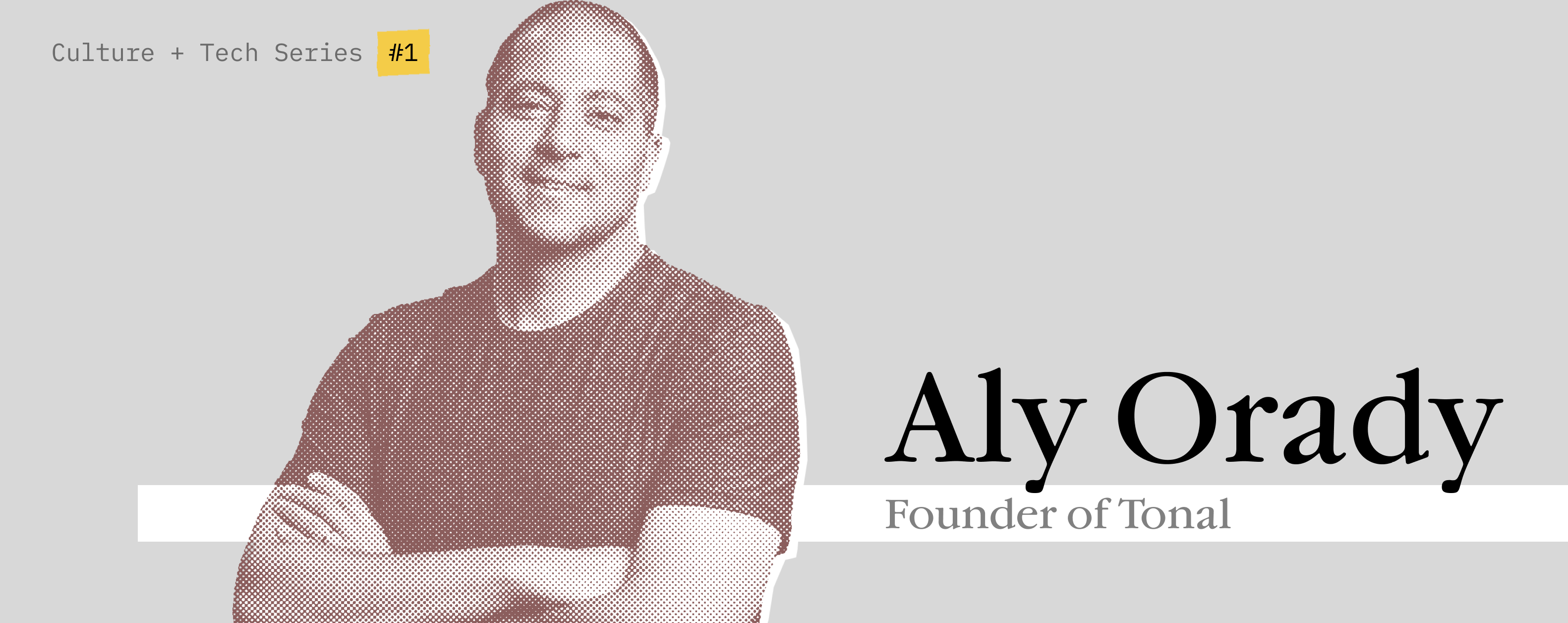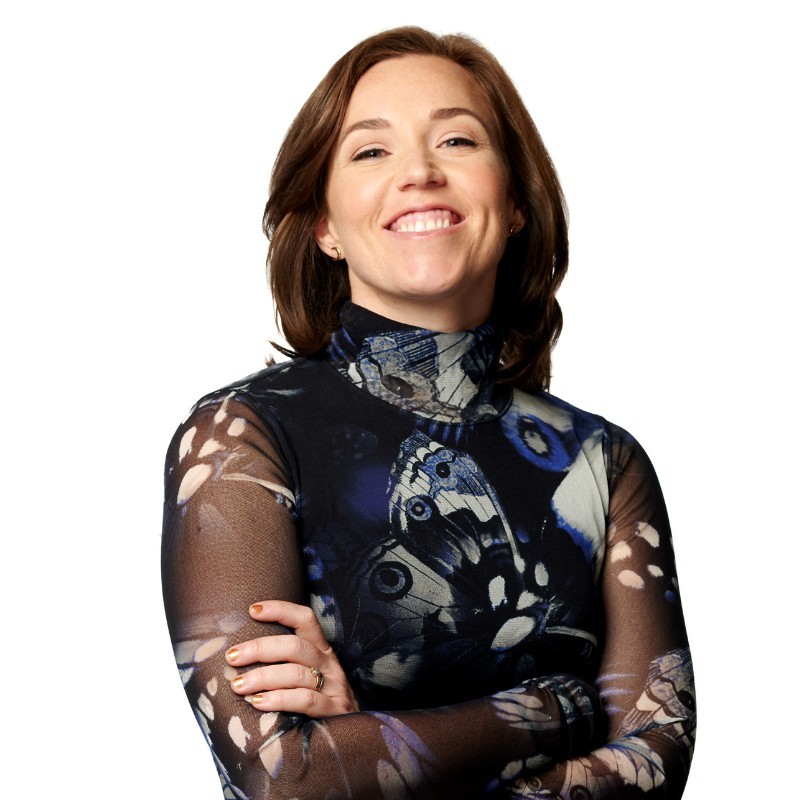
When I first met Aly back in 2015 he had a pitch deck, a box with a pulley on it, and a mission-driven tenacity unrivaled by any founder I had ever met. His determination radiated a feeling that he would bring his idea to life one way or another. We proudly wrote him his first check.
Today, Tonal surpasses a billion dollar valuation.
The intelligent home gym system is well on its way to putting a digital personal trainer in millions of households.
The world changes at the confluence of technology and culture. In 2015, we were closely tracking the way health and wellbeing was rapidly becoming a pillar of the American family. On the technology side, we were confident that connected devices were uniquely positioned to enable personalized product experiences that would transform entire legacy industries. What Tonal was doing was forward-thinking then and integrated into our day-to-day routines now.
I sat down with Aly to catch up and talk about the evolution of Tonal from concept to billion dollar business.
Kate McAndrew: Situate us in time and space. Where are you?
Aly Orady: I’m in my attic. I run a billion dollar business from my attic! That’s the pandemic – we’re getting there.
Kate: What’s your founding story? How did it all begin?
Aly: I started my career in technology. I never imagined I’d be the CEO of a fitness company. It never even crossed my mind. By the time I was 35, I’d had success in technology but my health was a complete disaster. I’m talking Type 2 Diabetes, sleep apnea, and I was overweight. I quit my job and spent nine months getting really passionate about fitness. I lost 70 pounds. I remember I was sitting on the bench in the gym one morning staring at this giant strength training machine thinking, I can’t keep coming to the gym every day at five or six in the morning once I go back to work. I wish I could just do this at home. I literally went home, ordered some parts, and started working on Tonal. Six months later, I had a prototype. From there it was – build, build, build. Go, go, go.

Kate: What was happening in technology that made Tonal possible?
Aly: Think about computerized as ‘smart’ and non-computerized as ‘dumb.’ If you walked into a gym fifteen years ago, five years ago, or even last week – you could walk up to any treadmill and it would have digital readouts to tell you how fast you were running. And you could adjust your speed and incline from there. But if you were to walk over to the weight room, there would just be dumb hunks of metal. No digital readouts. No way to control the weight. The things that make cardio equipment smarter never existed in weights. So there was this massive opportunity to effectively take strength training and bring it a hundred years forward and start using data.
Strength training is actually a much more complex activity than cardio. And data helps guide people’s journeys in much more impactful ways in strength training than it can in cardio. We all know how to bike and run. We’ve been doing it since we were kids. But most people don’t really know how to strength train properly. We wanted to be the equivalent of a personal trainer.

Kate: In order to deliver on that you had to build an incredibly complex product.
Aly: Yeah, it was not easy. We spent three and a half years in product and technology development. We had to reinvent the mechanism by which we generate force. We don’t generate force using big metal plates and gravity. We do it using electricity and electromagnetics. So we had to develop an electromagnetic engine and a lot of algorithms.

Years of user research fed back into so many elements of the design. For example in watching users work out, we realized strength training is something people do at their own pace. People in trials were falling behind and stressing out and their form was suffering. And people who were getting ahead of the video would whip out their phone and start texting. That’s a total fail! If you touch your phone during a workout, we failed you. So those years were so, so important. And it’s why when we went to market out the gate we had a product with the highest engagement in the history of product engagements.
Kate: The early prototypes looked much more like erector sets than pieces of art. One of the things we watched you do was balance the technical needs with the design requirements. It wasn’t simply building something that worked. You also had to build something people wanted to put on their living room wall.

Aly: If you look at most training equipment, the joints are big and clunky. You would never want that in your bedroom or living room. We had to make it compact. Balancing form and function is really important. You can build a product that’s all function. You can build a product that’s all form. But nailing that balance? It took years.
You can build a product that’s all function. You can build a product that’s all form. But nailing that balance? It took years.
Kate: As a new mom, there’s a whole culture around ‘snap back’ to your original shape, which I’m not a fan of. But then there’s another culture around getting strong again so you can easily lift your kid and participate fully in your life, which feels a lot better to me. And Tonal is part of that culture.
Aly: Yes, we built pre-natal and post-natal content on our system for that reason. If you’re a new mom (or even a dad), a year and a half in, you’re picking up a thirty-pound object ninety times a day! It takes strength to do that and not hurt yourself.
A realization I had early on was if you walked into a weight room, it was all dudes. But all the data told me that women were just as interested in strength training as men were. Over a two-month period, I exclusively interviewed women. The theme I found in the interviews was that strength is very functional. It’s about feeling stronger, being stronger.

Kate: What makes right now a special time for Tonal?
Aly: The trend we saw in 2014 when this company called Peloton came out of nowhere and sold ten million dollars worth of bikes in their first year – has only accelerated. (Peloton just had a billion dollar quarter.) People were doing this very inconvenient thing– signing up for a gym membership, going to the gym, using its equipment, and coming home. It was really inefficient. The model wasn’t working. Half of gym members paid and didn’t even go. The truth is if you want someone to pick up a good habit, you’ve got to make it convenient. You’ve got to bring it to them. Imagine if you had to go somewhere to brush your teeth everyday. How absurd would that be?
The exact same dynamics that existed five years ago when I started Tonal are even more relevant now. This idea of moving workouts to the home has obviously picked up so much momentum. It’s the future.

Kate: Are you seeing any shifts in culture right now that you find interesting?
Aly: The pandemic has obviously changed a lot of consumer behavior, and I don’t see things just snapping back. People are becoming homebodies. They’re investing in their homes and the lives they have at home. Some people have learned how to cook for the first time and are falling in love with it. People are baking bread for the first time and aren’t going to ever go back to store bought bread. These are habit shifts that aren’t going back.
Kate: Fast forward in time…where will Tonal be in five years?
Aly: First of all, in a heck of a lot more households. In the last year, we’ve also seen Tonal used in pro sports. So, there’s going to be a lot more happening in terms of training players. We’ve also announced clinical trials at the Mayo Clinic for testing Tonal’s application in physical therapy and rehab. But bottom line? Imagine getting a personal trainer into millions of households. That’s where we’re going.

Bolt invests at the intersection of the digital and physical world.
